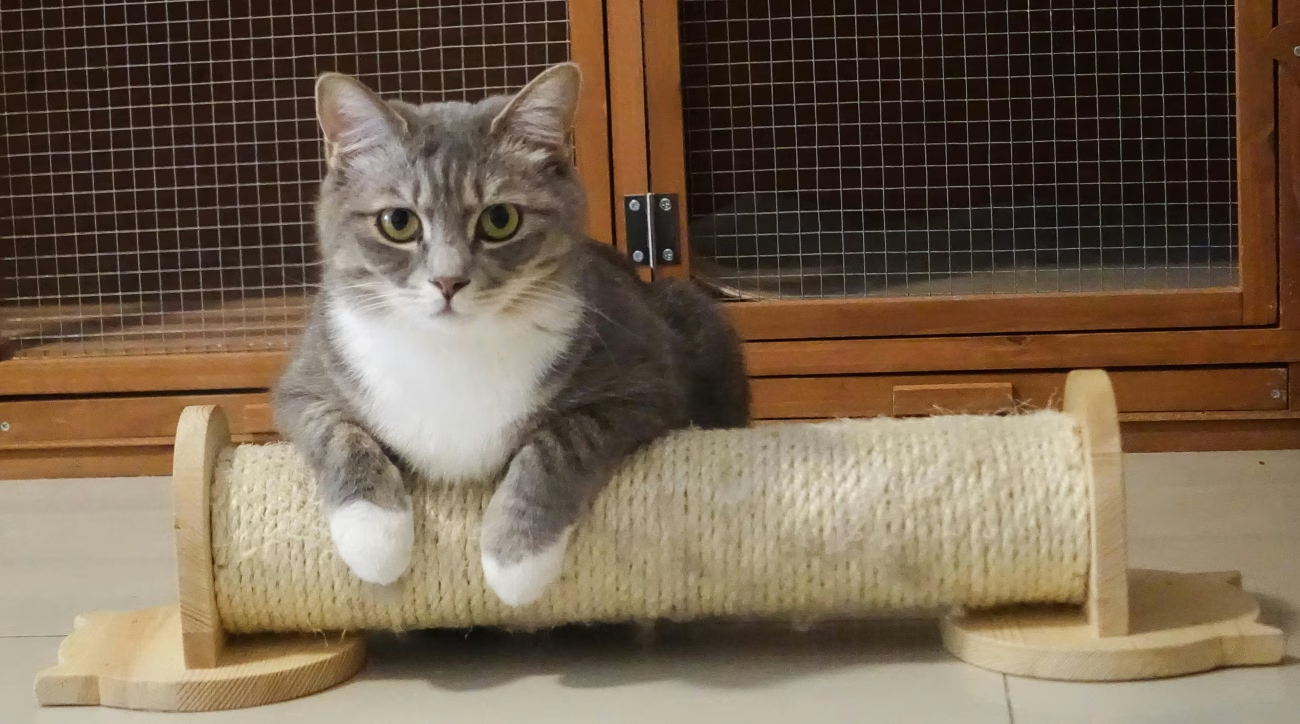Introduction: Your Cat Is Wilder Than You Think
Your cat may spend most of its time lounging on the windowsill, but deep down, it still shares the instincts of a wild predator. From silent stalking to the pounce, your cat’s behavior is shaped by thousands of years of evolution. Even domestic cats retain the brain and body of a hunter, they just no longer need to chase down their food.
Yet, when cats are kept indoors (as is often safest) their natural instincts can get stifled. Without regular mental and physical stimulation, cats may become bored, anxious, or even overweight. You might see the signs: late-night zoomies, scratching furniture, biting ankles, or crying at closed doors.
The solution? Enrichment games that stimulate your cat’s wild instincts in a safe and fun way. Let’s explore seven wild-inspired activities that will wake up your indoor cat’s inner hunter.
Why Enrichment Is Essential for Indoor Cats ?
In the wild, a cat might spend hours each day hunting, climbing, exploring, and problem-solving. These activities provide stimulation not only for the body, but also for the mind. Indoor cats, on the other hand, don’t face those daily challenges, unless we give them opportunities to mimic them.
Without enrichment, cats can develop:
- Lethargy and weight gain
- Overgrooming or stress-related habits
- Aggressive or needy behavior
- Anxiety and boredom
The key is to offer play that taps into instinctual needs: chase, hunt, capture, scratch, climb, and explore.
7 Wild-Inspired Enrichment Games
1. The Paper Prey Game
Inspired by: Stalking small prey in brush or grass.
Crumple up a paper ball, sprinkle in a little catnip, and toss it into a paper bag or under a towel. Let your cat sniff, stalk, and pounce. It’s a simple setup, but incredibly effective.
Why it works : Simulates prey rustling in the underbrush. A natural trigger for hunting.
2. DIY Foraging Box
Inspired by: Digging and foraging for food in the wild.
Fill a shallow box with crumpled newspaper, paper rolls, or safe foliage. Drop in dry treats or kibble for your cat to dig and find. You can also make cardboard puzzle feeders.
Why it works: Encourages natural foraging and activates your cat’s brain and nose.
3. Laser Chase with a Catch
Inspired by: Chasing fast, unpredictable prey.
Use a laser pointer for a few minutes, but always end with a tangible “catch” like a toy or treat. This gives your cat a satisfying end to the hunt and prevents frustration.
Why it works: Builds stamina and replicates chase-pounce-catch behavior.
4. Curtain Ambush
Inspired by: Hide-and-pounce ambush tactics used in tall grasses or caves.
Hang a teaser toy just behind a curtain or under furniture. Encourage your cat to crouch, hide, and attack from cover.
Why it works: Activates ambush instincts and sharpens coordination.
5. Window Safari Station
Inspired by: Observation and silent tracking.
Set up a perch near a window with access to a bird feeder or garden. Add a blanket or scent toy. Let your cat “mentally” stalk the birds or squirrels it sees.
Why it works: Provides visual stimulation and satisfies the watch-and-wait part of hunting.
6. Treat Trail Adventure
Inspired by: Tracking scents or prey trails.
Hide dry treats around a room or hallway. behind pillows, under rugs, inside toys. Change the trail each time so your cat has to truly “hunt” for the reward.
Why it works: Builds confidence and encourages scent tracking.
7. Wild Hunt Rotation Box
Inspired by: Variety and unpredictability in nature.
Keep 10–15 toys in a bin and rotate 3–4 every few days. Hide toys in different places to create surprise. This keeps old toys feeling new and sparks curiosity.
Why it works: Prevents boredom and encourages environmental exploration.
Refresh & Rotate Regularly
Cats love novelty, especially when it resembles unpredictable prey. Rotate toys weekly, change your hiding spots, and combine multiple games into one session. For example, create a foraging box with a treat trail leading to it.
A consistent, enriched routine can dramatically improve your cat’s mood and behavior.
Use Natural Materials
In the wild, cats interact with all kinds of textures and scents. Bring some of that inside:
- Twine and rope toys
- Feathers and wool
- Untreated wood or cardboard
- Real leaves or branches (make sure they’re non-toxic)
Natural materials add realism and sensory depth to indoor play.
FAQ: Wild-Inspired Cat Play
Q: Can I use these games for kittens or seniors?
Absolutely! Just scale the energy level. Kittens need short bursts. Senior cats benefit from gentle, sniff-based games like treat trails or foraging boxes.
Q: My cat loses interest quickly , what now?
Cats need novelty. Rotate toys and don’t leave everything out all the time. Try different textures, scents, and movement styles.
Q: Is laser play safe for cats?
Yes, but always end with a physical toy or treat so your cat gets a reward. Without a “catch,” laser play can cause stress or frustration.
The Wild Is Closer Than You Think
Even if your cat has never seen a mouse or hunted in the grass, those instincts are still alive, just under the surface. By providing natural, engaging enrichment games, you’re not just entertaining your cat, you’re honoring its wild side.
The best part? You’ll deepen your bond, reduce stress, and build a more confident, curious, and happy feline companion.



One thought on “7 Wild-Inspired Enrichment Games for Bored Indoor Cats”